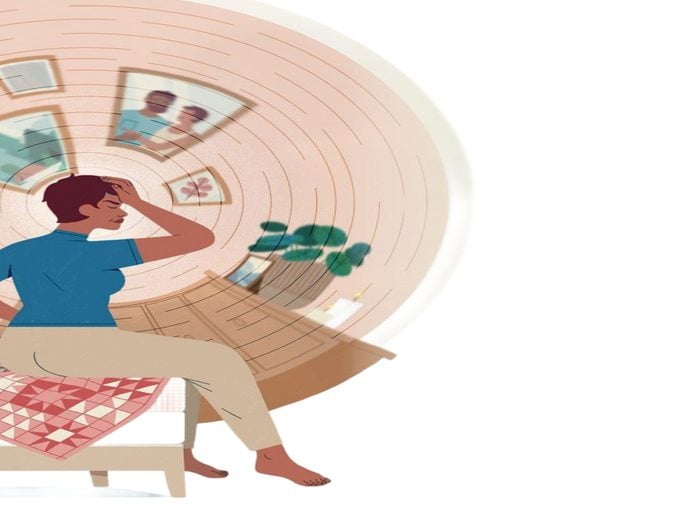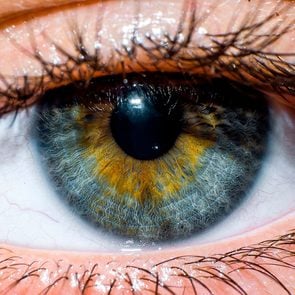Oh, No: Vertigo! Here’s How to Handle It.

If your world is spinning, you're not alone: vertigo is more common than you think. Here's how to manage your symptoms.
One morning last winter, Lynn Smith was doing a series of gentle yoga stretches in her living room, trying to loosen up a stiff lower back. When the 56-year-old sat up, she felt a bit strange. “I started to feel dizzy in a way I had not felt before,” she says.
In bed that night, Smith had the sensation that the room was spinning. She would later learn that she was experiencing her first episode of vertigo.
Vertigo is often described as a sensation of motion, but it’s more complex than a dizzy spell. Ringing in the ears, loss of balance, double vision and trouble swallowing are other common sensations, depending on what is causing the vertigo. Each episode can last anywhere from a few minutes to a few days.
Although it can affect people of all ages, vertigo is most common in mid-life and beyond. It’s also more prevalent in women, though experts don’t fully understand why, says Dr. Terry Fife, a neurologist at the Barrow Neurological Institute in Phoenix, Arizona, who specializes in balance disorders. Nearly 35 percent of Canadian adults will experience vertigo at least once in their lifetime.
It’s important to understand that vertigo is not a disease in itself: It’s a symptom. There are many reasons why someone may have vertigo, but it generally falls into one of two types: peripheral vertigo and central vertigo.
With peripheral vertigo, the most common cause is a condition called benign paroxysmal positional vertigo, or BPPV. (Less common causes are head injury or Ménière’s disease, a rare inner-ear condition.) BPPV develops when canaliths (tiny crystal-like calcium particles) that naturally occur inside the ear become loose and move deeper into the inner-ear canals. As they roll around inside, they can disrupt the transmission of information to the brain about balance. BPPV-caused vertigo can then flare up when someone leans back to look up into a high kitchen cupboard, bends over to tie their shoe—or, as Smith discovered, folds over in a yoga pose.
Central vertigo is less common and occurs in people who are experiencing a problem with the central nervous system, such as vestibular migraines (a type of migraine defined by extreme dizziness) or stroke.
With so many different causes of vertigo, the treatment options are equally diverse. “That’s why getting the diagnosis right is especially important,” says Fife. A primary-care physician may refer a patient to an ear, nose, and throat specialist (ENT), or they may suggest a neurologist or a cardiologist.
BPPV will often resolve itself in a few weeks or months, but rather than wait, patients can try exercises to wiggle the canaliths, or ear crystals, back out of the inner ear. The Epley manoeuvre, which Smith had success with, is the most well-known. According to a 2023 study published in the journal Medicine, it improved vertigo in 98 percent of patients. Medications, like those prescribed for motion sickness, can help quell symptoms when they strike.
Smith’s neurologist also recommended she avoid alcohol, sugar and caffeine, as they could potentially trigger episodes of vertigo. Stress and inadequate sleep are other possible triggers.
“Feeling the room spin was terrifying,” says Smith. As she shared her experience with others, she was surprised at how many people said they too had experienced vertigo. “This is not some obscure medical condition,” she says. “It’s more common than you think.”
Next, read about how to deal with motion sickness.






